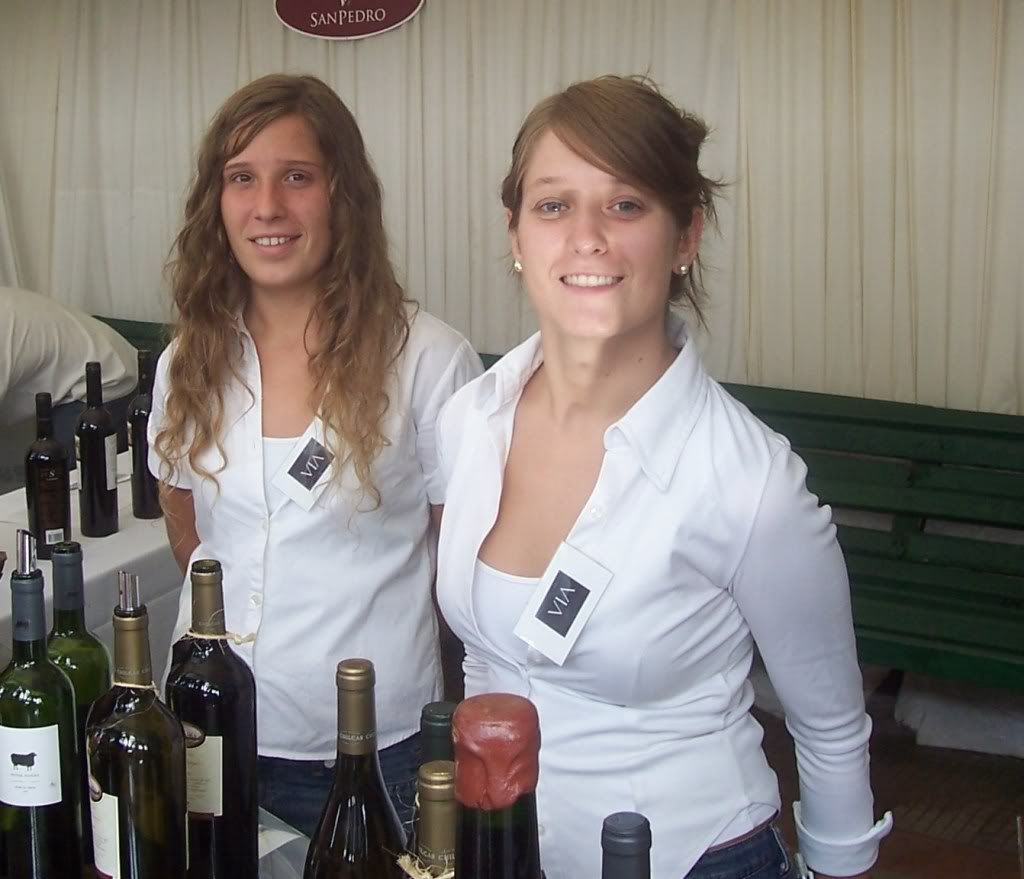Dr. Timothy LaSalle, CEO of the Rodale Institute, is a frustrated man. He is frustrated that his organization, focusing on organic farming, is outspent by Monsanto, that evil agribusiness whose Roundup glysophate herbicide, he says, is poisoning the soil and whose genetically engineered, patented seeds cannot be reused. He is frustrated that while small and local farmers have embraced the organic movement the vast majority of commodity corn and soybean row crop farmers and the vast majority of acreage have not and probably will not. For they have no incentive to change as they are propped up by a system of subsidies that encourage what he calls a monoculture of agriculture that fattens our children with sugar they do not need while delivering food which is low in nutrition—the ideal here being what organic producers call “nutrient dense” food. He is frustrated that the price of gasoline is “only $4 per gallon” thus delaying the great upheaval in the culture that would cause policy makers to finally embrace his idea of paying farmers not by the number of acres they plant but by the tons of carbon they return to the soil. This idea is called “carbon sequestration” and was the topic upon which he spoke at the RCCA (Rappahannock County Conversation Alliance) annual meeting at the Link yesterday.
Perhaps one reason he cannot sell his ideas to the great unwashed masses is Dr. LaSalle runs with an elite crowd. Instead of delivering his stump speech at county fairs and agriculture conventions to people who actually farm for a living, this PhD arm-chair agronomist puts forth his ideas to people who with visions of Wendell Berry hold up farming as some kind of ideal way to slow development and preserve open space without having actually to make a living trying to do so. In front of a well-heeled crowd in Rappahannock County—the whole county of course can be called that---he spoke yesterday of sharing his ideas with fellow elitists Al Gore, a part-time farmer who made his fortune with Google stock and Leon Paneta, Bill Clinton’s chief of staff. Dr. LaSalle zips around in his rented Toyota Prius from one model farm owned by a Carnegie to that of a Rockefeller. This is farming not as a livelihood but as prototype where profits do not matter and where produce is held up as some kind of artifact to be photographed for the magazines. Dr. LaSalle knows this and for this reason he is frustrated.
The Rodale Institute for many years been researching and writing about organic farming to conventional farmers who mock them as a bunch of granola crunching hippies. As if to make that point exactly at the end of Dr. LaSalle’s speech a woman who in her youth probably was a granola crunching hippy stood up and delivered a 5 minute impassioned, somewhat awkward diatribe of her definition of “organic”. Dr. Salle addresses that head on when he said that, “This is not a bunch of granola crunching hippies. It is science.”
Rodale is trying to cast wider its net of influence by speaking of organic farming as a way to reduce green house gases and return carbon to the soil. His timing is good because global warming of course is in the news and that crisis which he longs for is perhaps upon us. The Kyoto accord (which he would like to see renegotiated) is affecting policy in Europe and Japan. But it’s difficult to see Iowa corn farmers or California growers, who of course farm everything, stop using fertilizers simply because Dr. LaSalle wants them too.
Dr. LaSalle laid out his ideas in a presentation and in his paper “Regenerative Organic Farming: A Solution to Global Warming”. At the Robert Rodale Reserve in Pennsylvania 29 years ago they laid out side by side test plots of conventional chemical farming plots next to those that were organically farmed. The chemically farmed plots are no-till drilled with corn and soybeans using paraquat, glysophate, atrazine, and presumably some cultivation to burn down, rip out, or suppress weeds before sowing seeds in the soil. The conventionally farmed fields are then treated with postemergence herbicides to control weeds. In the organic fields there is no tillage nor chemicals. Instead a roller crimper is used to kill the cover crop of rye or the legume hairy vetch. Vetch adds nitrogen to the soil and rye and vetch both create a dense matt through which weeds cannot easily grow. Corn or soybeans are then drilled into the mulch and grow relatively weed free.
A byproduct of all of this 29 years of research, much to Dr. LaSalle’s satisfaction, is that the organically farmed soils over time have seen their organic matter increase. “Organic matter” is of course carbon. This is the carbon sequestration of which he talks so passionately. Soils that are high in organic matter are better able to tolerate both drought and flood because the humus--which acts as a sink to soak up all of this carbon dioxide which is causing global warming--also soaks up and retain water. If only he could convince the US Army Corp of Engineers, he says, there would be no more Mississippi River floods.
Rodale’s idea is that farmers can forgo fertilizer if they build up the soil using no-till organic practices. Row crop farmers in Virginia would tell you they already use no-till practices and have been doing so for a generation. Deep tillage of course is the culprit that destroys organic matter in the soil and releases it into the air in the form of carbon dioxide. But they still use too much nitrogen. When they grow corn they inject liquid nitrogen right into the soil. It would be better to plant legumes like clover which naturally add nitrogen to the soil. Manufactured nitrogen is problematic in two ways. It takes lots of natural gas to extract nitrogen from the air. (Chemically air + natural gas = anhydrous ammonia. Ammonia is basically nitrogen. You then take this ammonia and add carbon dioxide to create urea which is another form of nitrogen). And nitrogen destroys soil microbes and burns roots. These soil microbes help break down compost thus adding carbon to the soil. But it is unfair of Dr. LaSalle to characterize all fertilizers as “chemical fertilizers”. Plants need large amounts of phosphorous and potassium too. Those are made without petroleum. Phosphorous is made by using strong acids to release phosphates from rock phosphate which is mined from the soil. Potassium is also made from mined materials using acid to release them. Nitrogen is just one component of the fertilizer troika “N,P,K” which is respectively nitrogen, phosphorous, potassium.
Dr. LaSalle says that much of his research is not relevant for the rolling pastures that dominate Rappahannock County for we don’t grow corn here except for those few farmers who feed it to their own cattle. Here our cover crop, grass, is basically our only crop so it would not make too much sense to kill it with a roller crimper and try to drill seeds into the resulting mulch matt. Those seeds would not even germinate since they require soil contact not to mention that is would be cost prohibitive to tear up your pastures every year. Instead Dr. LaSalle says the way for Rappahannock farmers to return carbon to the soil is loosen up the compacted soils—compacted by the heavy hoof of the cow--with a yeoman’s plow and practice rotational high density grazing. This is a practice where cows are shepherded from one plot to the next for often only hours at a time where their manure drops onto the soil in high enough quantities to form a layer of compost which improves the soil by adding organic matter and of course sequestering carbon. Lots of farmers here read about and believe in such practices but maybe only Cliff Miller is actually doing this since it requires lots of fences and lots of time spent moving the herd.
As for logging Dr. LaSalle simply says we cannot have any of that. He says the forest holds twice the amount of carbon below the soil as above it and felling a tree releases much CO2 into the air. Anyone who owns timber land in Virginia knows if you simply forget about your forest eventually your trees will fall over dead. Not all of us are so rich with university grants that we can simply let our most valuable agriculture product just lie there for others to marvel at. All of what Dr. LaSalle says makes sense. He just needs to find a way to communicate his ideas to those who wear overalls instead of pullover sweaters.








7 comments:
I found LaSalle's presentation very interesting. It gives me hope for the future of our planet knowing that there are a plethora of options for cleaning up the carbon waste we create on a daily basis. One question that kept gnawing at me last night was, "how much is 1000g of carbon dioxide"? Does it fit in teacup or does it fill a hot air balloon? Just what does a 1000g of carbon dioxide look like? How much carbon dioxide does my car emit everyday? I would have liked further explanation or correlation on that. It sounded wonderful, but is it merely one grain of sand in the ocean or a dump truck of sand an hour?
Melissa J. Harris
Walker, please don't miss the point. If we paid farmers handsomely for sequestering carbon, not only would their livelihoods improve, we could sequester 1/4 of all the USA carbon dioxide emissions. If we added ranchers to the mix we would most likely double that amount.
There is nothing more urgent than dealing with climate crisis. Farmers and ranchers can help save us all from a global disaster if can provide incentives for a conversion to soil regeneration, thus organic matter build up, thus carbon sequestration, thus healthier soils, water, atmosphere, and food.
Lets begin the march to change policy that helps our farmers and ranchers while saving our very lives.
Tim LaSalle
Virginia forests did very well for millions of years with no management by mankind and did not "fall over dead," so I think this is totally not the point. Now that we've replaced most of our forests with cropland, pasture, and commercial and residential development, our forests do require human management. However, this should still mean careful, selective logging and reduction of invasive species. The goal should be forest health - for wildlife, carbon sequestration, water and soil protection, as well as economic gain. We need to consider the health of the understory, and all it gives us and wildlife, as well. While forest conservation in the early part of the 20th century helped return some land to forest, we continue to lose forest in Virginia at an alarming rate, according to a Va. Dept. of Forestry survey that covers 2002-07:
"Since the last survey published in 2002, there has been an estimated net loss of forest land of nearly 128,000 acres. Forests now cover 15.7 million acres of Virginia’s 25.4 million acres, according to the survey. With an average plot re-measurement period of 5.2 years, the net loss was at an annual rate of 25,000 acres per year, up from 20,000 acres per year in the 7th survey"
This shouldn't be taken lightly.
Walker,
I am a vegetable farmer in Virginia, and I was at Mr. LaSalle's presentation. I wear overalls and pullovers (sometimes together, but we're not here to discuss my fashion faux pauxs.)
I have to disagree to some extent with your opinion that the audience was wrong for the presentation. Mr. LaSalle was addressing landowners, who are more and more commonly providing opportunities for agriculture to survive. "Making a living" as a farmer has become a convoluted subject. But the truth of the matter is, that without landowners who are excited about organic/sustainable farming, many of the organic farms across the country wouldn't exist. I think Mr. LaSalle's mission last night was to reach these people- educate them and perhaps excite them to create new opportunities in agriculture, rather than change current farmer's production methods.
Can organic farming be more than a hobby? Can it be profitable in a "normal" capitalistic market? Now that is something to talk about. Paying farmers for carbon seems like a good idea, but it doesn't address the problem of the prohibitive cost of procuring land and capitalizing a farm business. This issue is one I would like to hear Mr. LaSalle's opinion on.
I find Mr. LaSalle inspiring, and to inspire a slightly jaded vegetable grower, who has been in the organic movement since the 1990's is a feat. If he serves as a rallying figure, if he brings the organic gospel to new arenas, or if he influences one politician, one farmer,or one landowner to manage their pasture rather than leave it in weeds... he has provided a great service.
Emily Cook
To Walker: there is no wrong audience. The more the message is heard, the more the chance of action. Landowners no matter what they wear can make a difference. For successful rotational grazing, may I suggest you look (or relook) at the the Saladin's Polyface model - besides what is already practiced in the county. How do you know Cliff Miller is the only one doing it? Riparian buffer management and forest management practices also help so Rappahannock County forest owners and pasture owners can contribute to a solution.
Melissa, 1000 g of CO2 is 2.2 pounds. How "large" it is depends on the pressure at which it is held.
The Carbon Dioxide Information Analysis Center (CDIAC), the primary climate-change data and information analysis center of the U.S. Department of Energy (DOE), has some answers for you.
For example, their FAQ#25 (http://cdiac.ornl.gov/faq.html#Q25) is
”Q: Could you tell me, please, if I have 1 gallon of fuel in my car, how many (units?) of CO2 will be emitted? Is there any difference if the car 4 or 6 or 8 cylinders or in respect of horse power in percentage?
A: A good estimate is that you will discharge 19.6 pounds of CO2 from burning 1 gallon of gasoline. This does not depend on the power or configuration of the engine but depends only on the chemistry of the fuel. Of course if the car gets more miles per gallon of gasoline, you will get less CO2 per unit of service rendered (that is, less CO2 per mile traveled).[GM]"
My response to your question on what’s a kg (1,000g) of carbon and how does that compare to your car emission and carbon sequestration through changes in agricultural practice is:
Suppose you have a car which gets the average fuel efficiency of 22.4 miles per gallon (see http://www.bts.gov/publications/national_transportation_statistics/html/table_04_23.html). Let’s further suppose that you drive 15,000 miles a year, then you are using 670 gallons of gasoline a year. Multiply that per 19.6 pounds of CO2 (carbon dioxide) and you produce 13,125 pounds of CO2, or 5.97 metric tons of CO2.
CO2 is made-up of one atom of carbon and 2 atoms of oxygen. The carbon constitute about 27.3% of the weight of CO2. So 5.97 tons times 27.3% = 1.6 tons of carbons.
(see FAQ 26 for the basis for my calcs/ note I have rounded the calc to make them easier to read)
Furthermore, per EPA Website (http://www.epa.gov/sequestration/index.html) - Response to FAQ #4: "Changes in cropping practices, such as from conventional to conservation tillage, have been shown to sequester about 0.1 – 0.3 metric tons of carbon per acre per year (Lal et al. 1999; West and Post 2002)."
Let's say changes in agricultural practice sequester .2 metric tons per acre per year, that's 200 kg of carbon. Therefore converting 8 conventionally cultivated acres to no-till would offset the 1.6 tons of carbon emitted by the car in our example. I suspect that converting to regenerative practices as the ones mentioned by Dr. LaSalle (and not just no till) would result in even greater carbon sequestration. I just could not find the answer quite as fast. But it should give you an idea of the magnitude of things. That would make a neat article, wouldn’t it?
There are 8,500,000 acres of farmland in Virginia (about 1/3 of our total land area). Assuming that 25% (or 2.125 millions acres) is converted to be able to sequester 0.2 tons of carbon per year per acres, that would result in 425,000 tons or carbons being sequestered a year – more than enough to offset the emission of over 260,000 cars of our example.
By the way, I also note that per the same CDIAC research, the per capita carbon emission (from fossil-fuel, ie gas, oil & coal – and remember that a lot of our electricity is coal-based in Virginia) is 4.5 ton/per capita for Virginia in 2001 – the latest year they show in their downloadable chart (it’s 5.4 metric ton is 2001). So you can see that change in agricultural practices would go a long way in helping to offset our current carbon emission.
I am glad I was able to attend the presentation. It helped me to be able to connect the dots on different things that I knew and and put things in perspective.
Sylvie
http://www.LaughingDuckGardens.com/ldblog.php
oops! paragraph before last got garbled in prior posting. Virginia's carbon emission was 4.5 tons per capital in 2001; US average was 5.4
Sylvie
Nice writing Elliott. Glad to hear you are learning about organic farming. Wish I could learn more. love to you, LB
Post a Comment